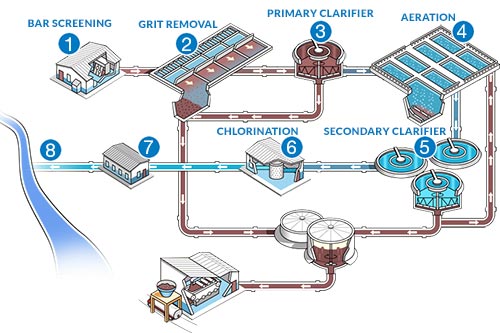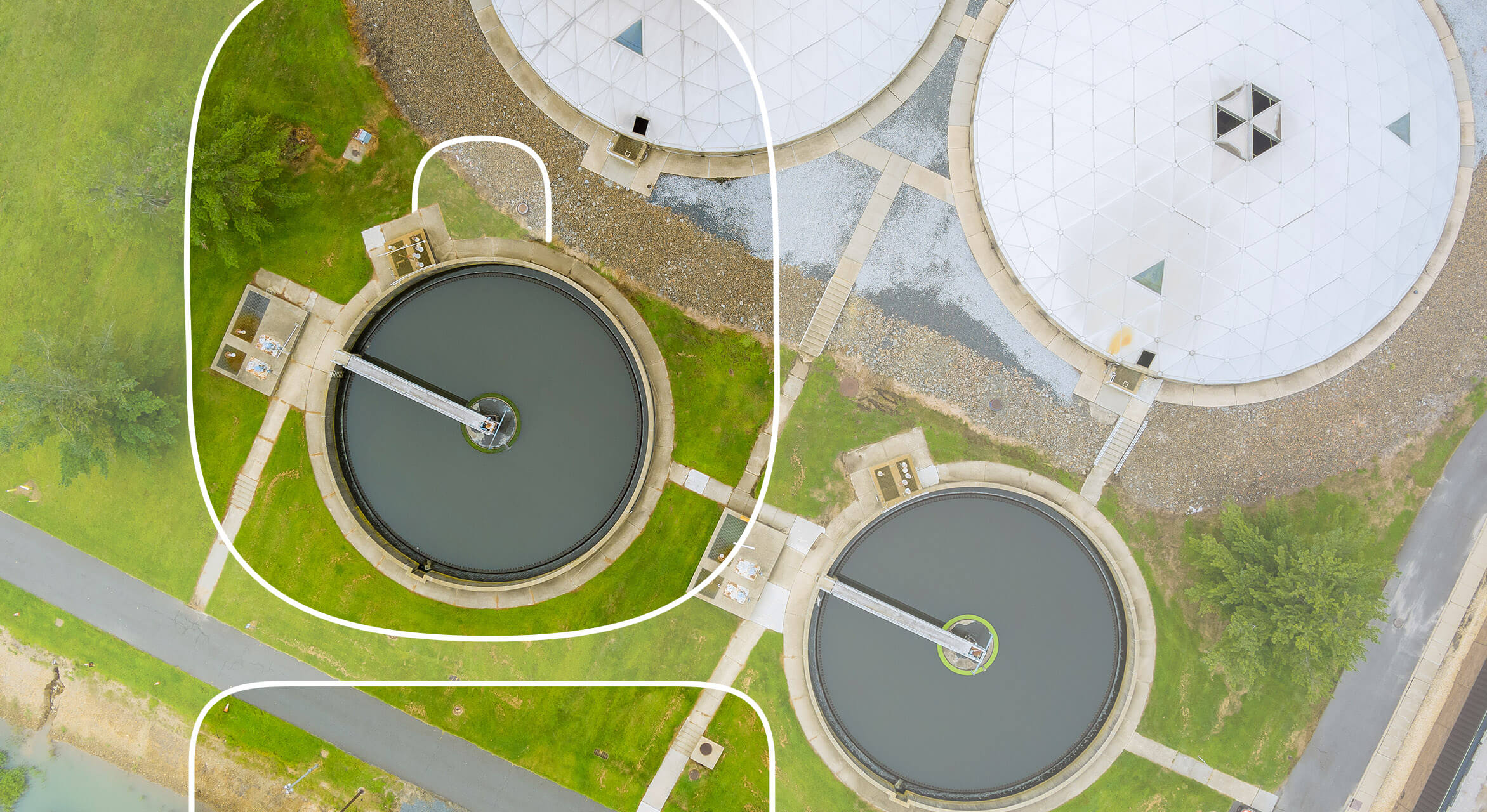Tips to Reduce Your Footprint with Proper Wastewater Disposal
Tips to Reduce Your Footprint with Proper Wastewater Disposal
Blog Article
Comprehending Wastewater Treatment Processes and Their Environmental Effect
The ins and outs of wastewater treatment processes play a critical function in mitigating ecological obstacles connected with water contamination. Each stage, from preliminary to sophisticated therapies, is made to address specific pollutants, ultimately safeguarding both public health and wellness and water environments. However, despite technical advancements in treatment efficiency, considerable challenges linger, consisting of the monitoring of recurring pollutants and the effects of nutrient drainage. As we discover the intricacies of these procedures, it ends up being necessary to doubt just how much current methodologies can evolve to satisfy the expanding needs of sustainability and ecological preservation.
Overview of Wastewater Therapy
Exactly how is wastewater transformed into a secure source for the environment? Wastewater treatment is an important process created to eliminate pollutants from utilized water, thereby safeguarding public health and protecting ecological communities. This process begins with the collection of wastewater from residential, commercial, and industrial sources, which is then routed to therapy centers.
At these facilities, numerous physical, chemical, and biological techniques are utilized to deal with the wastewater. Consequently, biological treatments, such as activated sludge procedures, use microorganisms to damage down organic matter.
The treated effluent can be securely discharged into natural water bodies or reused for irrigation and industrial objectives, advertising source preservation. Additionally, the treatment procedure produces biosolids, which can be repurposed as fertilizers or dirt amendments, further boosting sustainability.
Phases of Therapy Processes
The wastewater therapy procedure generally is composed of 3 primary stages: initial, primary, and secondary therapy. Each phase offers an unique duty in decreasing the contaminant lots and guaranteeing the effluent meets environmental standards before discharge.

The key treatment phase focuses on the physical splitting up of suspended solids from the wastewater. Through sedimentation, heavier bits settle at the base of sedimentation tanks, forming sludge, while lighter products, such as oils and oils, float to the surface area and are skimmed. This process considerably lowers the organic and inorganic tons in the wastewater.
Secondary treatment is a biological process focused on further lowering the focus of raw material. Numerous approaches, consisting of activated sludge systems and dripping filters, utilize bacteria to metabolize natural toxins. This phase is important for attaining the necessary biochemical oxygen need (BODY) decrease, inevitably leading to cleaner effluent prepared for discharge or additional therapy. Each stage is vital in securing environmental and public wellness.

Advanced Treatment Technologies
Complying with the additional treatment processes, advanced therapy innovations play a vital go to website function in more improving the high quality of dealt with wastewater. These innovations are designed to get rid of recurring pollutants that are not efficiently eliminated throughout primary and additional therapies, guaranteeing the effluent fulfills strict governing criteria.
Amongst the extensively made use of advanced treatment approaches are membrane layer purification, reverse osmosis, and advanced oxidation procedures. Membrane filtration, consisting of microfiltration and ultrafiltration, is efficient in dividing great bits, virus, and colloids from the water (Wastewater). Reverse osmosis makes use of semi-permeable membranes to get rid of dissolved solids, causing high-grade water suitable for numerous applications
Advanced oxidation procedures (AOPs) utilize solid oxidants to break down organic pollutants, consisting of pharmaceuticals and personal care items that are immune to standard therapy. These techniques improve the biodegradability of complex compounds, facilitating their removal.
One more significant modern technology is using biological nutrient elimination processes, which particularly target nitrogen and phosphorus, protecting against eutrophication in obtaining water bodies. On the whole, innovative therapy modern technologies are necessary for accomplishing greater degrees of filtration, promoting water reuse, and securing public health and wellness while dealing with the difficulties related to wastewater management.
Ecological Advantages of Therapy
Many ecological advantages arise from effective wastewater treatment procedures that add to ecosystem wellness and sustainability. Mostly, these procedures dramatically minimize the release of hazardous contaminants into all-natural water bodies, which helps preserve water ecosystems. By getting rid of pollutants such as heavy steels, nutrients, and microorganisms, treated wastewater mitigates the threat of waterborne conditions and promotes biodiversity in marine settings.
Additionally, wastewater treatment facilities commonly employ sophisticated innovations that allow water recycling and reuse. This practice not just saves freshwater sources but also lowers the need on natural water supplies. Improved nutrient removal from wastewater can likewise prevent eutrophication, a procedure that causes algal flowers and subsequent oxygen depletion in marine systems.
In addition, efficient therapy processes can decrease greenhouse gas exhausts, especially methane and laughing gas, which are often launched throughout untreated wastewater disintegration. By capturing and making use of biogas from anaerobic digesters, facilities can convert waste into renewable power, thereby contributing to a reduction in fossil gas reliance.
Obstacles and Future Trends
While the ecological advantages of wastewater treatment are clear, numerous challenges continue that impede ideal end results in this field. One significant concern is maturing infrastructure, advice which commonly results in ineffectiveness and raised operational prices - Wastewater. Several therapy plants were created years back, and their capacities do not his response align with modern-day needs, that include more stringent regulative requirements and greater volumes of wastewater because of urbanization

Looking ahead, there is an expanding emphasis on resource healing and circular economic climate principles within wastewater therapy. Developments such as anaerobic food digestion, which can produce biogas, and advanced filtration innovations are acquiring grip. These methods not just boost therapy effectiveness yet additionally advertise sustainability.
Inevitably, resolving these difficulties requires cooperation among stakeholders, financial investment in modern technology, and a dedication to recurring research study. By embracing these trends, the wastewater therapy sector can develop to satisfy the needs of a changing atmosphere and society.
Final Thought
In conclusion, wastewater therapy processes play an important role in boosting ecological top quality and public health and wellness. The multi-stage therapy framework, coupled with sophisticated technologies, effectively mitigates pollution and promotes sustainable water management.
Report this page